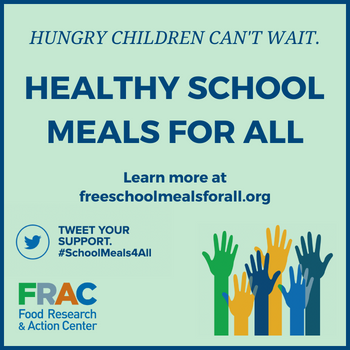The National School Lunch Program makes it possible for school children in the United States to receive a nutritious lunch every school day. Meals served must meet federal nutrition standards and any public school, nonprofit private school, or residential child care institution can participate in the program and receive federal funds for each meal served.
The program is administered at the federal level by the U.S. Department of Agriculture (USDA) and in each state typically through the state department of education or agriculture. To find the agency that administers School Lunch in your state, check USDA’s list of state administering agencies.
Quick Facts:
- Nearly 29.4 million children participated in the National School Lunch Program, with 21.1 million children receiving a free or reduced-price lunch, on a typical day in the 2023–2024 school year.
- Free and reduced-price lunch participation increased by just over 1.3 million children (6.8 percent) in the 2023–2024 school year when compared to the 2022–2023 school year.
- Over 94,000 schools, the vast majority, participate in the National School Lunch Program.
- 42 states and the District of Columbia saw an increase in school meal participation in the 2023–2024 school year compared to the 2022–2023 school year, likely driven by the growth in the number of schools offering meals to all students at no charge through the Community Eligibility Provision and state Healthy School Meals for All policies.
- The National School Lunch Program is the nation’s second largest food and nutrition assistance program behind SNAP.

Back to School 2025
School and afterschool meals reduce hunger, and support learning, behavior, attendance, and health and well-being. Yet the recently passed reconciliation budget package made deep cuts to SNAp that will undermine gains made in school meal participation.
- Benefits of School LunchA wide body of research supports the health and educational benefits of participation in the National School Lunch Program such as reduced food insecurity, obesity rates, and poor health. Find out more about the benefits of school lunch participation.
- Eligibility and ReimbursementsChildren from low-income households are eligible to receive meals for free or at a reduced price based on their household income or participation in other government programs like the Supplemental Nutrition Assistance Program (SNAP) or the Temporary Assistance for Needy Families (TANF). Children from households above the eligibility threshold pay the school lunch fee set by the school district. Find out more about school meal eligibility and how children are certified for free and reduced-price school meals.
- Community Eligibility ProvisionCommunity eligibility allows high-poverty schools and districts to offer breakfast and lunch at no charge to all students. Schools that use community eligibility have seen increases in participation in school breakfast and school lunch and reduced administrative costs. Find out more about the Community Eligibility Provision.
- Unpaid School Meal FeesSchool breakfast and lunch provide students with the nutrition they need to learn throughout the school day. Students certified for reduced-price meals can be charged a maximum of 30 cents for breakfast and 40 cents for lunch, and those who are not certified for free or reduced-price school meals are charged the cost of their meal. When students who are not certified for free school meals arrive in the cafeteria without cash in hand or in their school meal account, they can start to accrue school meal debt. School meal debt is a challenge for many school districts. For more information on unpaid school meal fees, refer to these FRAC resources:

FRAC’s Guide on Strategies to Boost School Meal Consumption
Read More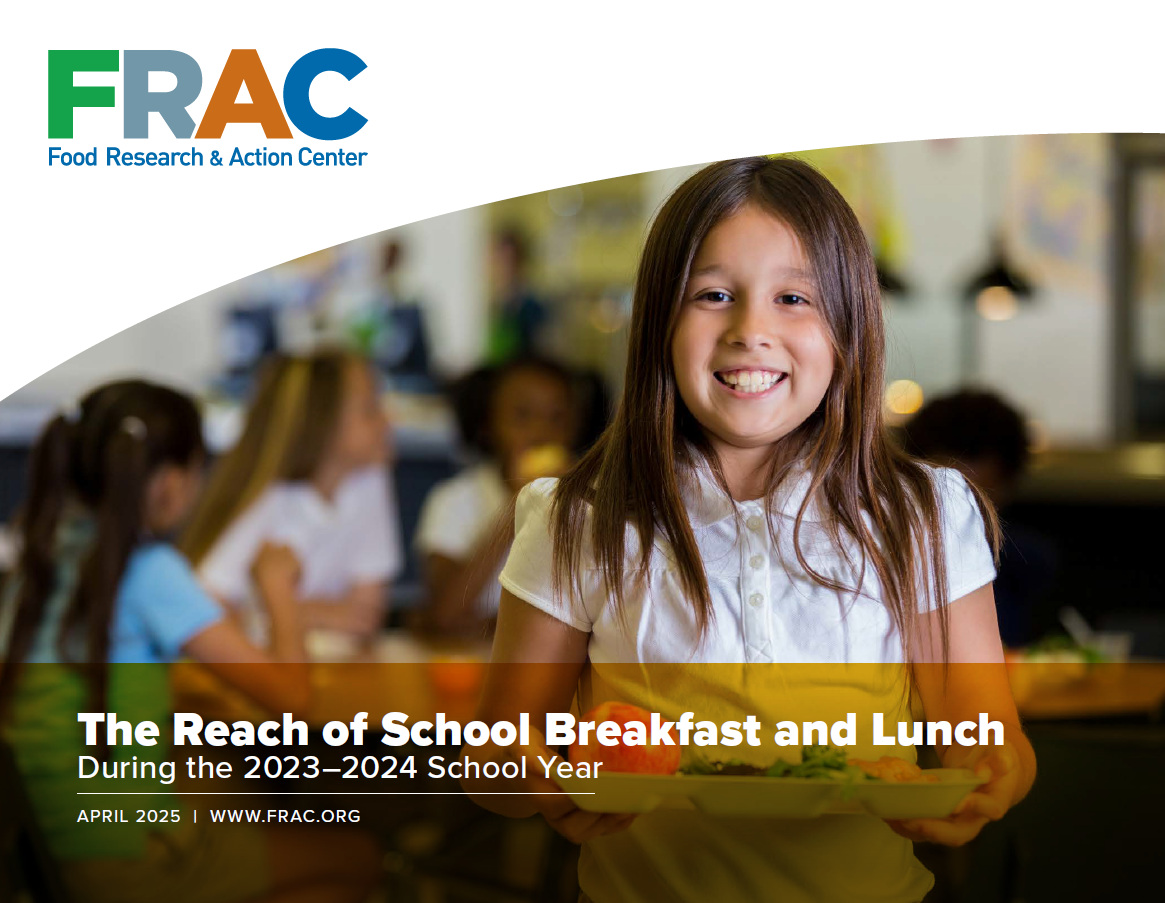
The Reach of School Breakfast and Lunch During the 2023–2024 School Year
Read More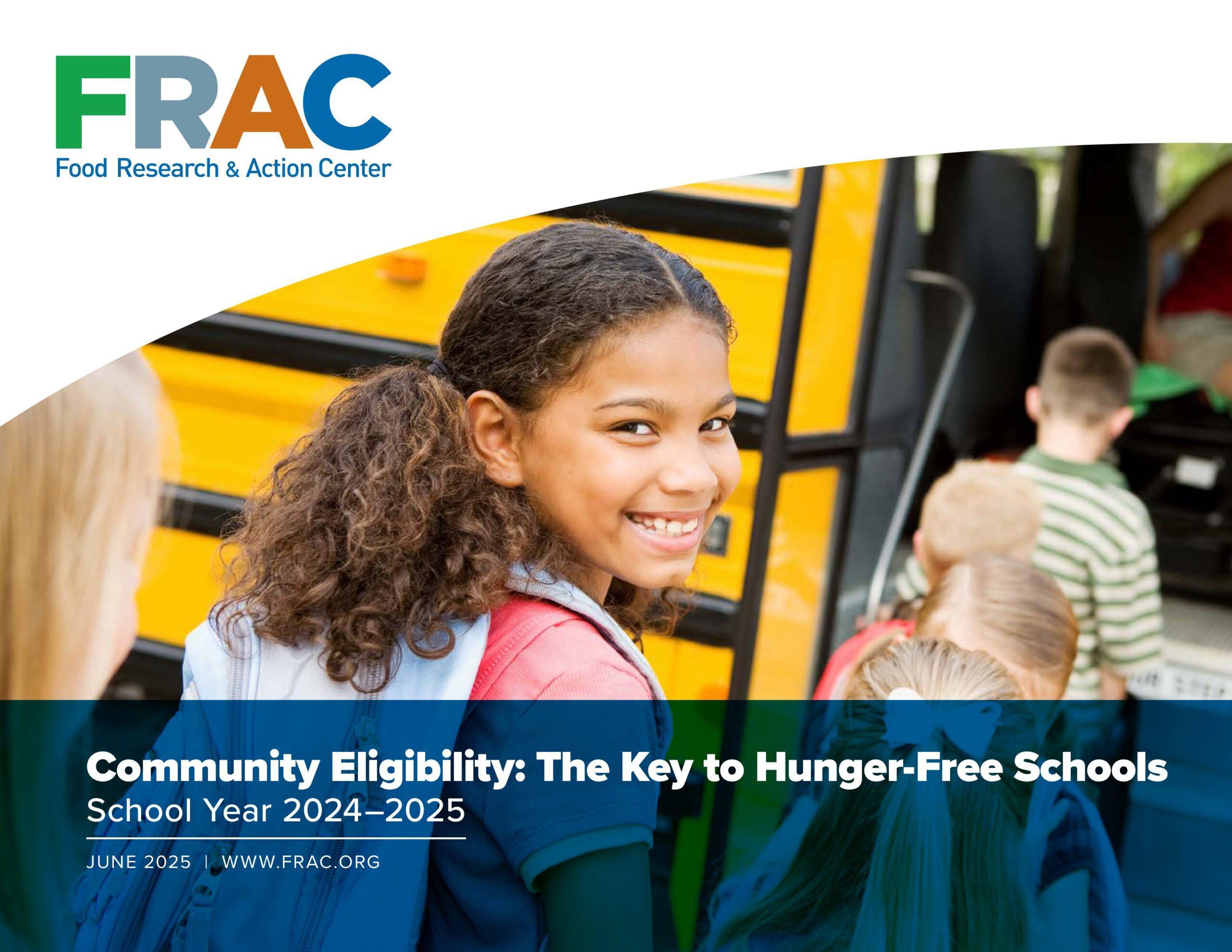
Community Eligibility: The Key to Hunger Free Schools, School Year 2024–2025
Read More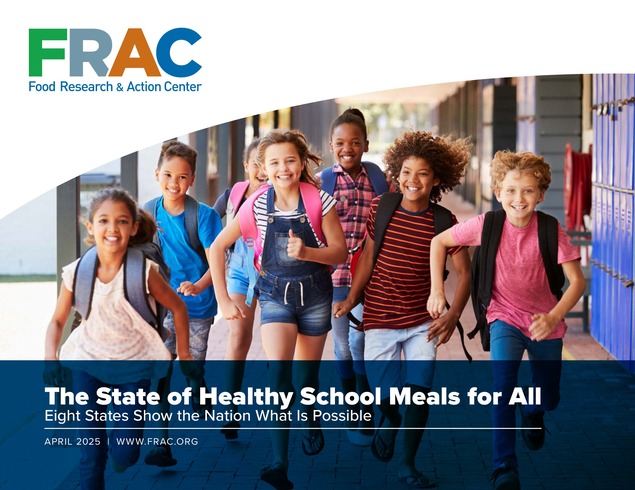
The State of Healthy School Meals for All: Eight States Show the Nation What Is Possible
Read More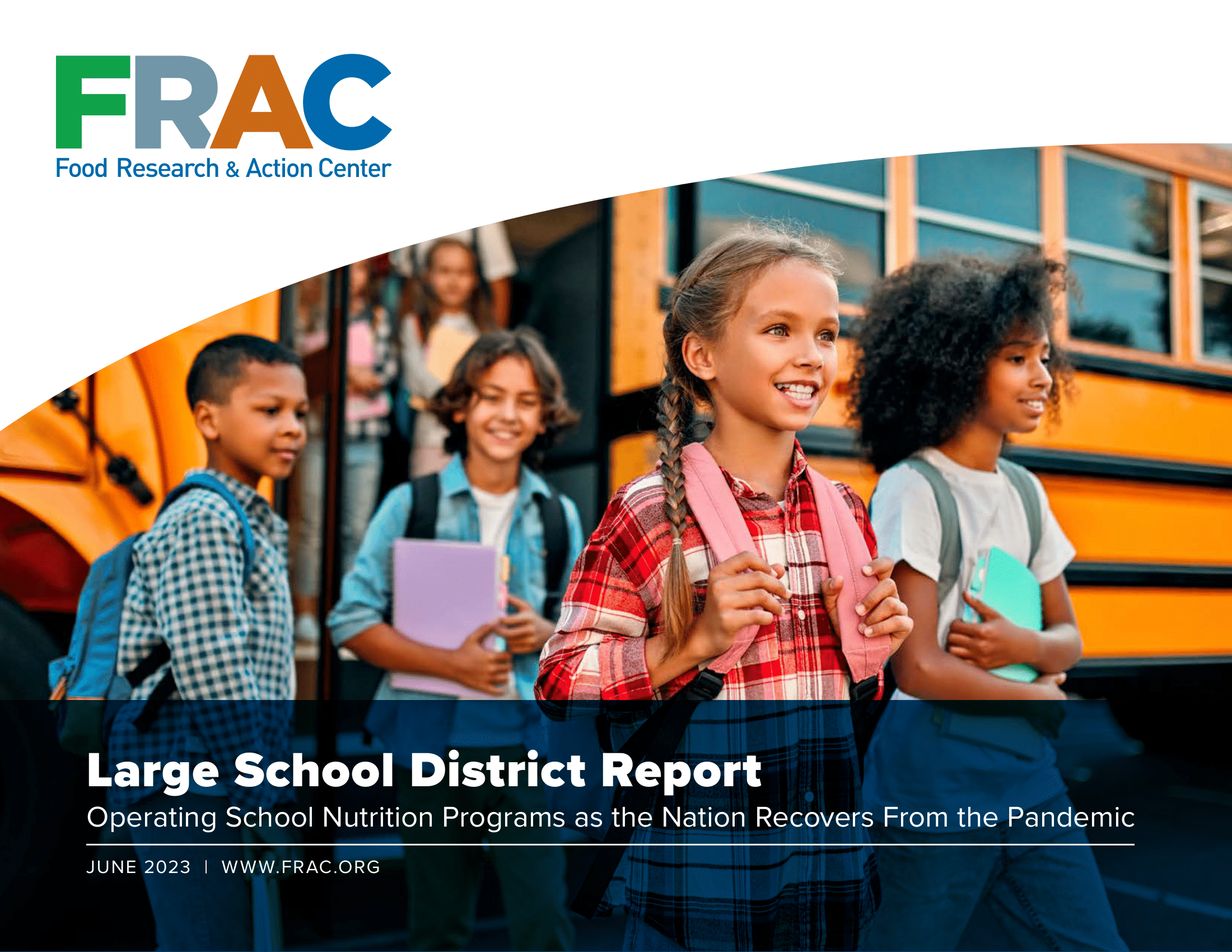
Large School District Report: Operating School Nutrition Programs as the Nation Recovers From the Pandemic
Read More

Keep In Touch
Subscribe to FRAC’s Meals Matter Newsletter for monthly updates on the school, summer and afternoon federal nutrition programs.

